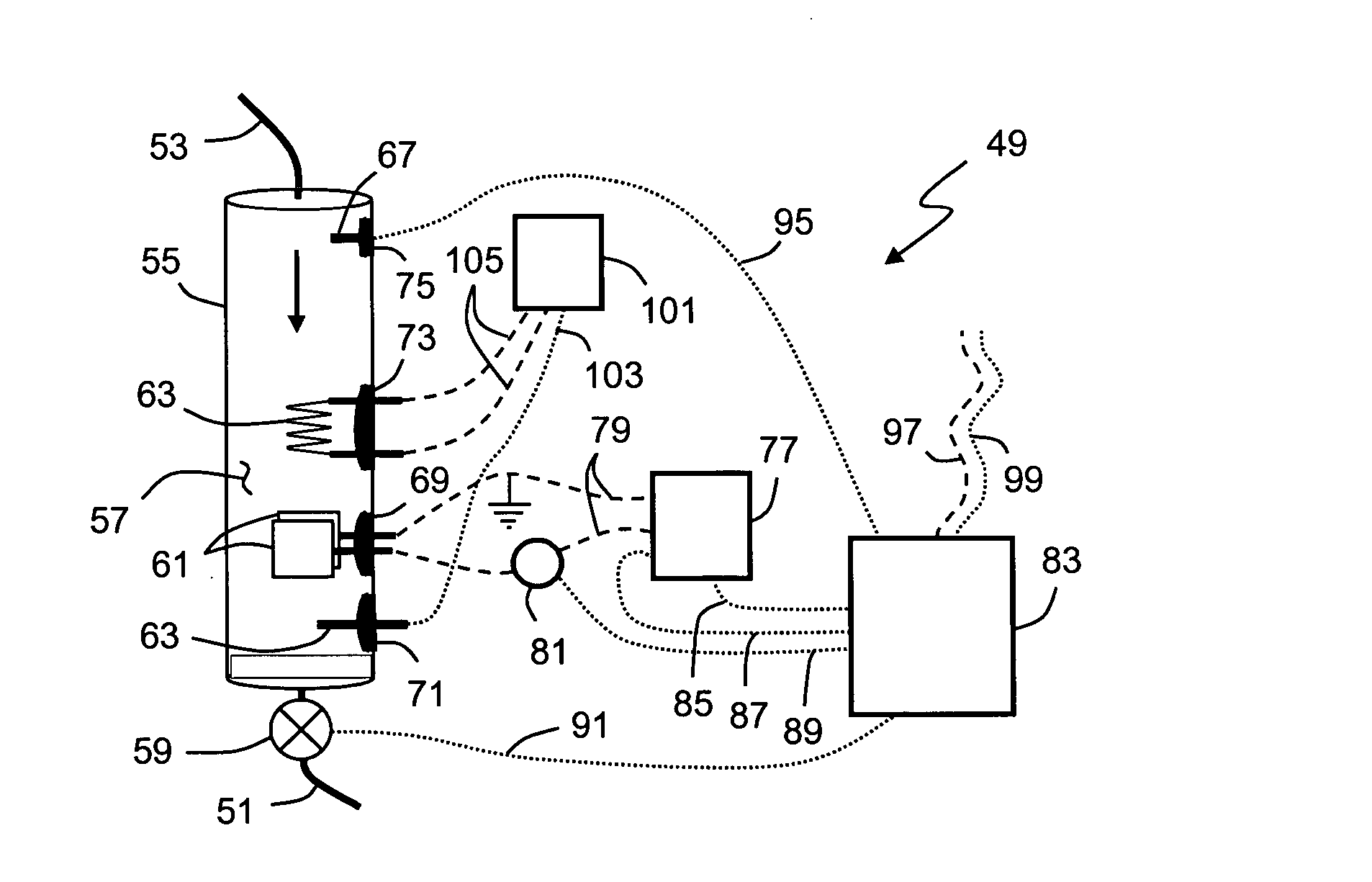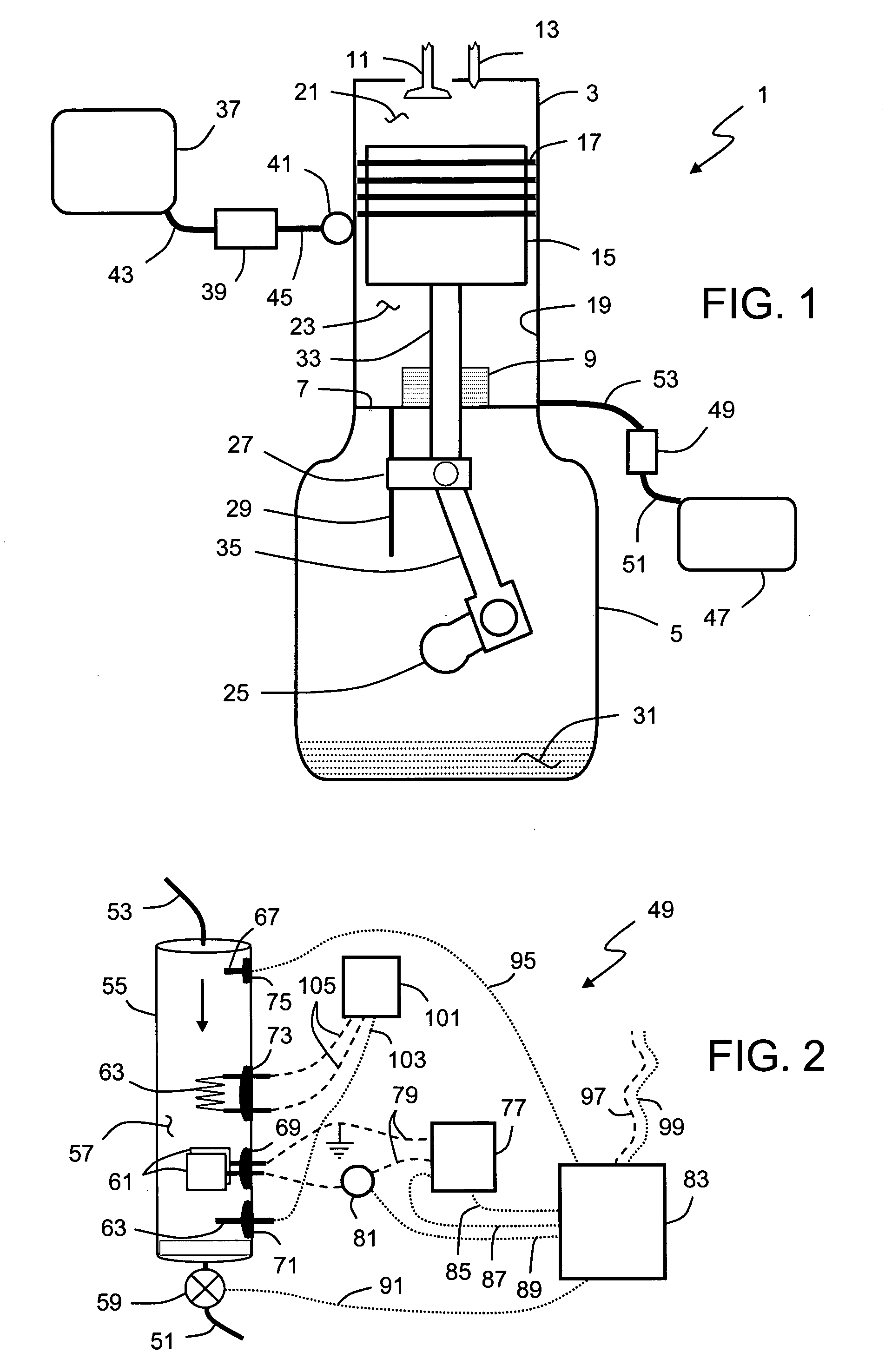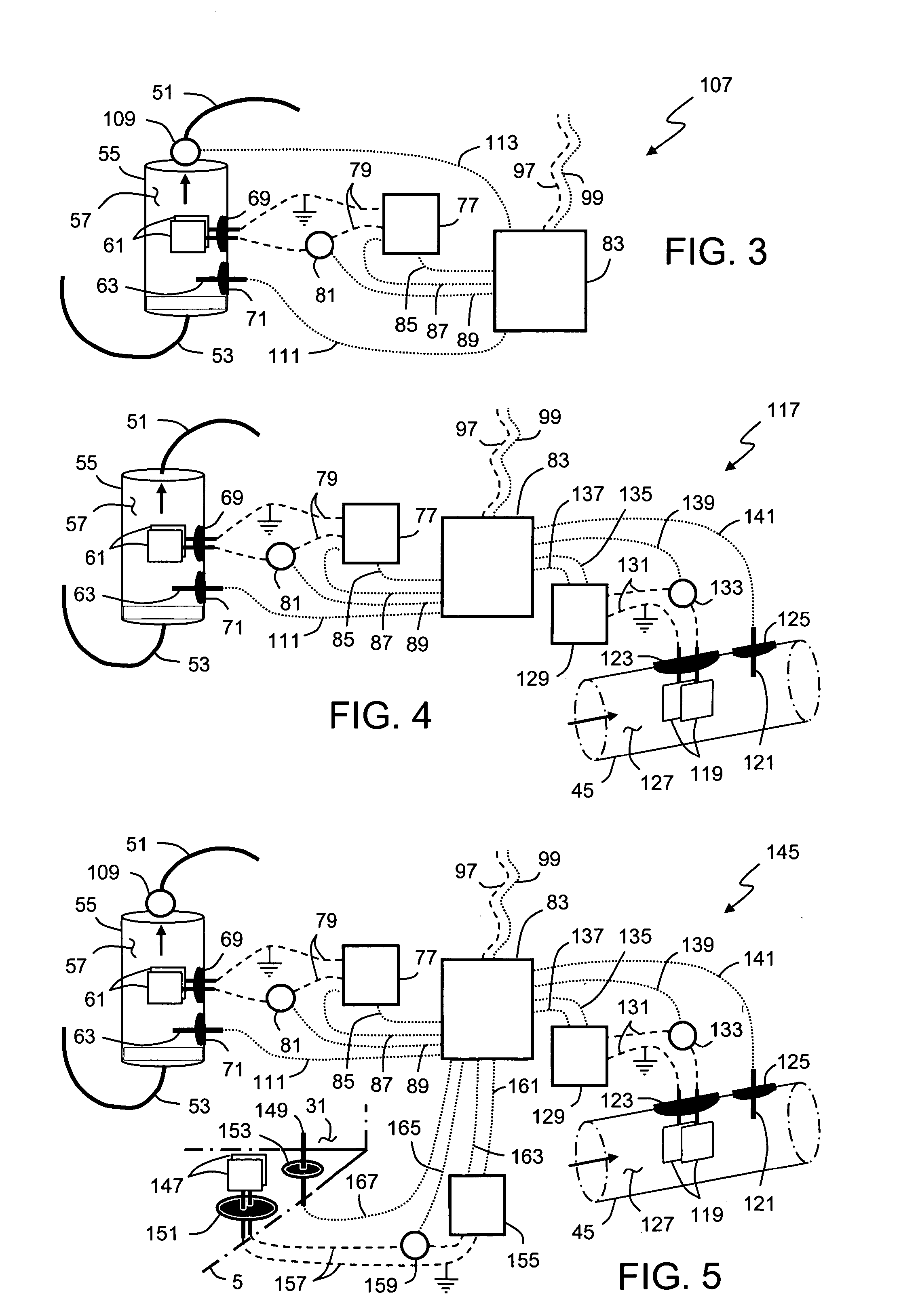Method and apparatus for estimating basicity of a used, all-loss cylinder lubricant
a technology of all-loss cylinder lubricant and basicity, which is applied in the direction of resistance/reactance/impedence, instruments, material impedance, etc., can solve the problems of reducing engine performance and life, lubricant no longer providing the desired acid neutralization function, and current flow rate decision is made based on the effect of acid neutralization function
- Summary
- Abstract
- Description
- Claims
- Application Information
AI Technical Summary
Benefits of technology
Problems solved by technology
Method used
Image
Examples
embodiment 187
[0075]FIG. 10 shows an embodiment 187 of a feature of the present invention that uses the total impedance ZT of the used cylinder lubricant and the total impedance ZTi of the fresh lubricant to determine the base number of a used lubricant in an open lubricant system where the used lubricant is maintained at a relatively constant temperature for condition determination, where there is essentially no contamination of the used lubricant, and where ZTi is inputted to the method if impedance of the unused lubricant changes. The used lubricant temperature can be maintained either by an apparatus of this invention, for example temperature controller 101 of apparatus 49 in FIG. 2, or by a means associated with the equipment in which the lubricant is used.
[0076] Method 187 begins in block 189 each time the equipment is started, i.e. turned “on”. After start-up method 187 proceeds to block 191, to read the used lubricant impedance ZT. ZT is obtained by a lubricant measurement apparatus that ...
embodiment 203
[0081]FIG. 11 shows an embodiment 203 of a feature of the present invention that uses the total impedance ZT of the used lubricant measured at temperature T, and the total impedance ZTi of the fresh lubricant measured at temperature Ti to determine the base number of a used cylinder lubricant. The impedances and temperatures are measured by an apparatus of this invention, for example apparatus 117 shown in FIG. 4. For convenience, method blocks with the same function as shown in FIG. 10 are numbered the same.
[0082] Method 203 begins in block 189 each time the equipment is started and proceeds to block 205 to read the used lubricant total impedance ZT, the used lubricant temperature T, the fresh lubricant total impedance ZTi, and the fresh lubricant temperature Ti. The ZT and ZTi can be actual impedances or measured values that can be converted to ZT and ZTi. Similarly T and Ti can be actual temperatures or temperature equivalents. The values read in block 205 can be essentially inst...
embodiment 213
[0085]FIG. 12 shows an embodiment 213 of a feature of the present invention that uses the measured total impedance ZTM of the used lubricant, the total impedance ZTi of the fresh lubricant, the total impedance ZS of a possible contaminant in the used lubricant, and the percentage contaminant % based on the ratio of fresh lubricant flowing into the open lubricating system Vi to the used lubricant flowing out of the system Vo to determine the base number of a used lubricant where the used cylinder lubricant is maintained at a relatively constant temperature for condition determination, where ZTi is inputted if impedance of the unused lubricant changes, and where ZS is inputted if contamination is detected. The used lubricant temperature can be maintained either by an apparatus of this invention, for example temperature controller 101 of apparatus 49 in FIG. 2, or by a means associated with the equipment in which the lubricant is used. The flow rate Vo of the used lubricant can be inpu...
PUM
 Login to View More
Login to View More Abstract
Description
Claims
Application Information
 Login to View More
Login to View More - R&D
- Intellectual Property
- Life Sciences
- Materials
- Tech Scout
- Unparalleled Data Quality
- Higher Quality Content
- 60% Fewer Hallucinations
Browse by: Latest US Patents, China's latest patents, Technical Efficacy Thesaurus, Application Domain, Technology Topic, Popular Technical Reports.
© 2025 PatSnap. All rights reserved.Legal|Privacy policy|Modern Slavery Act Transparency Statement|Sitemap|About US| Contact US: help@patsnap.com



